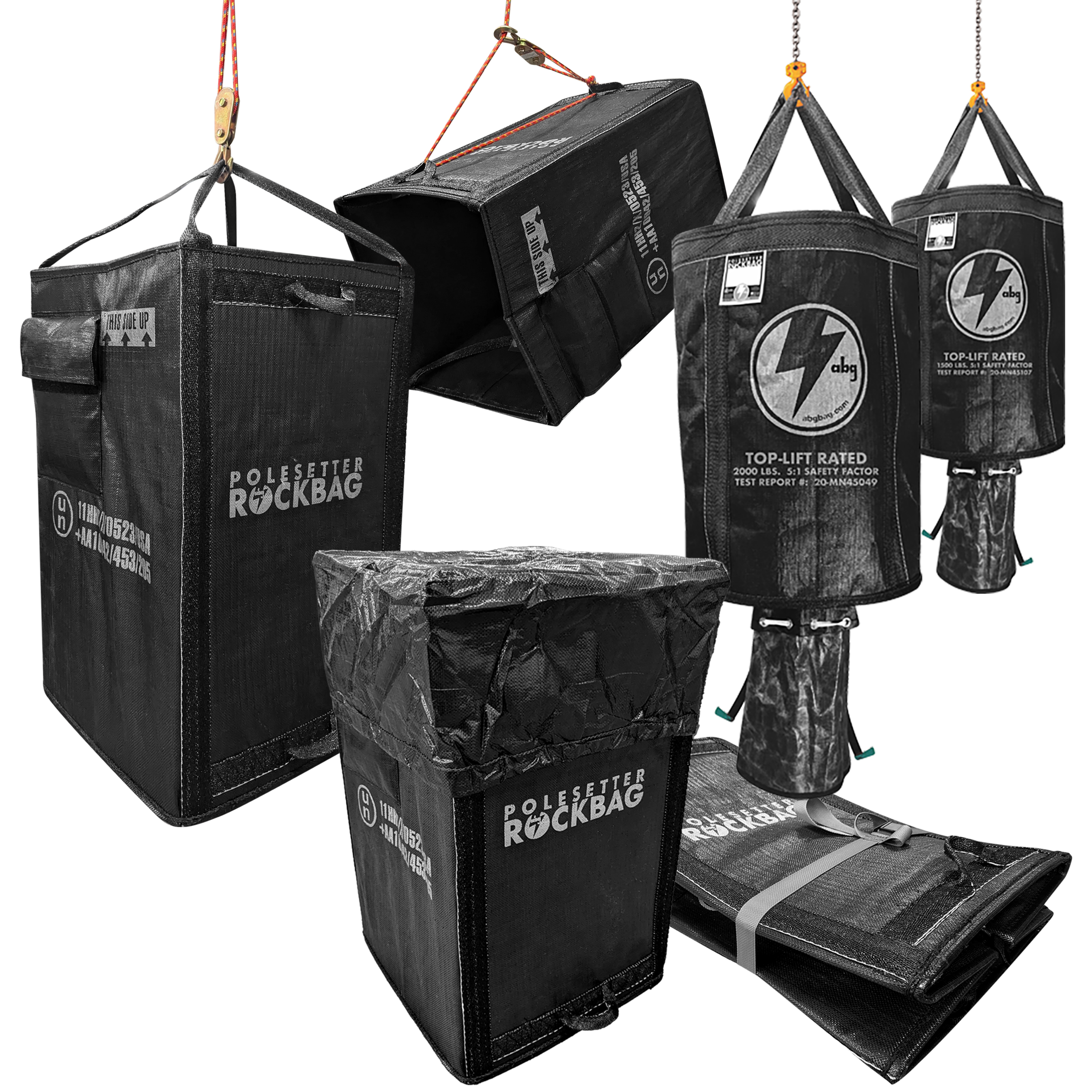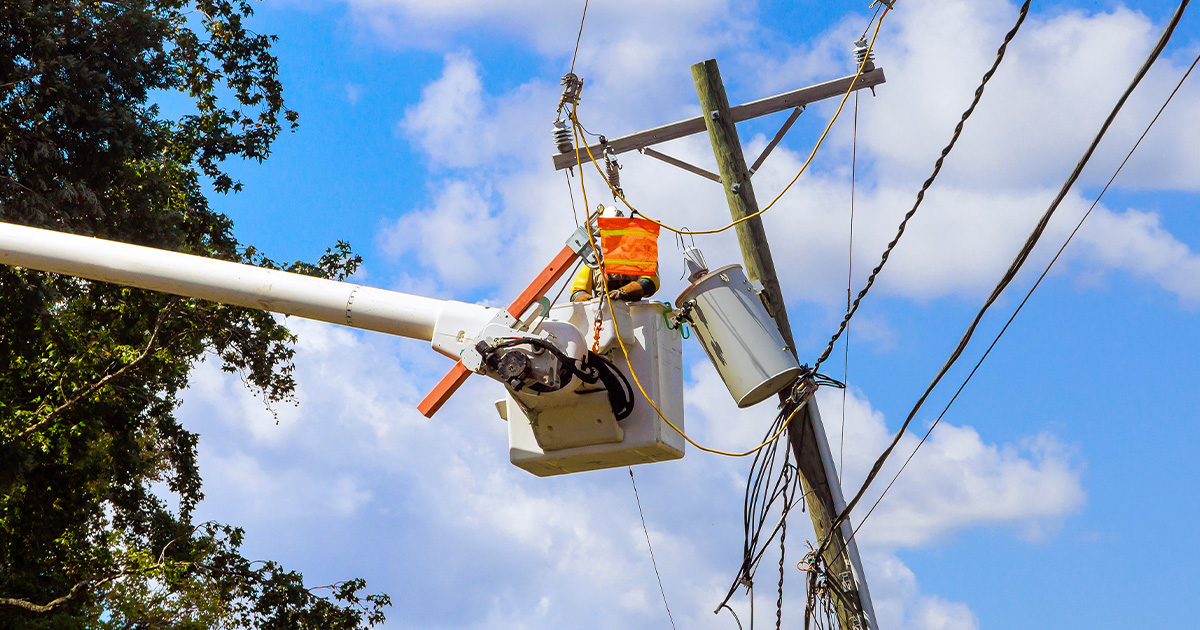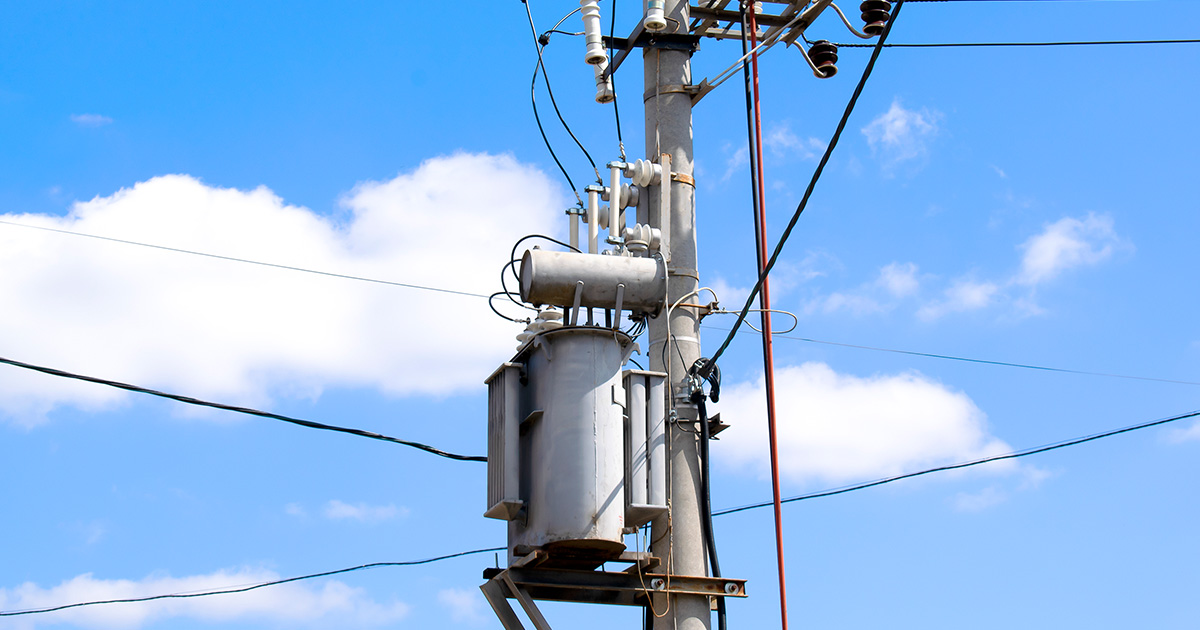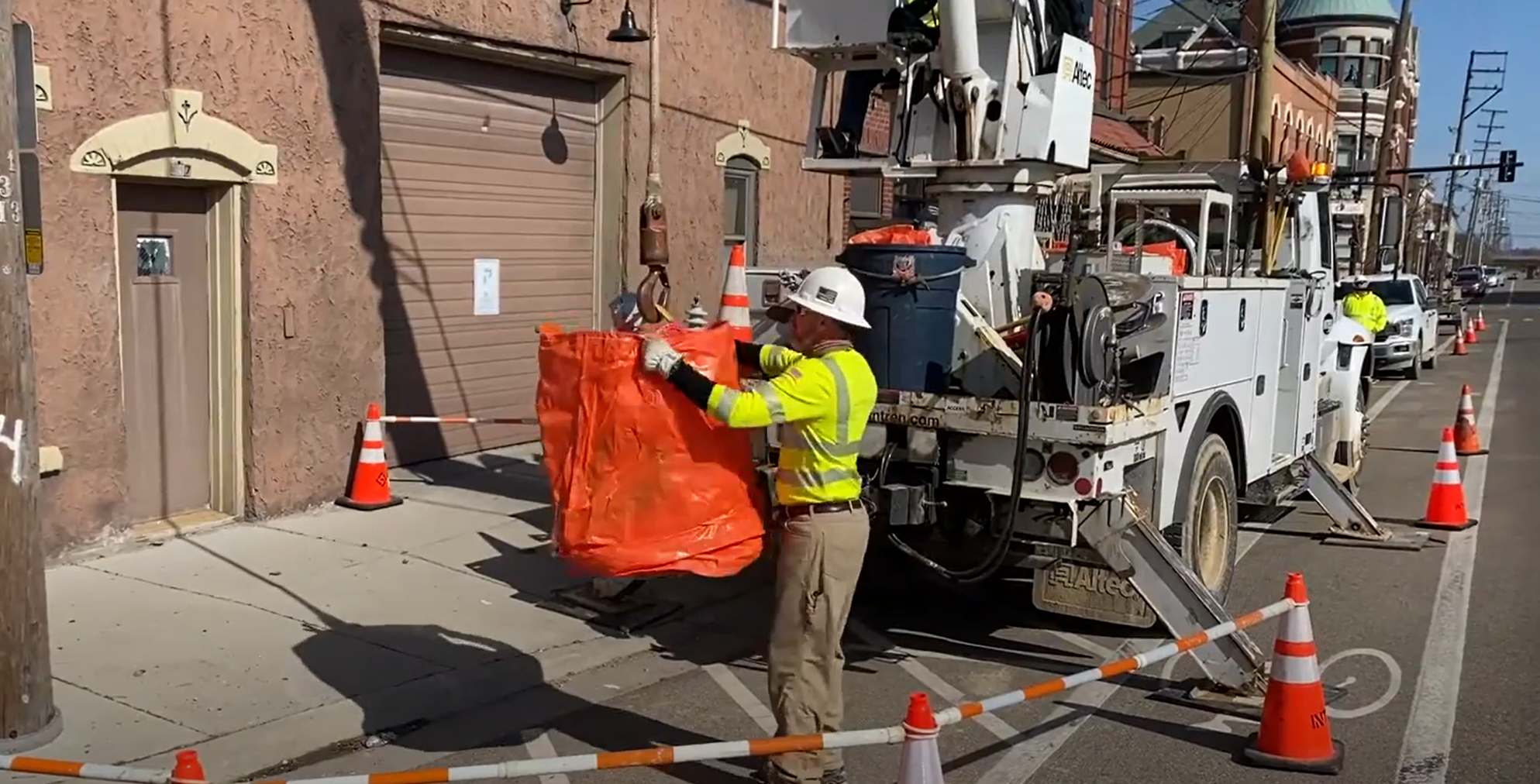0
Need help?
Customer satisfaction is our priority. Whether you have questions about our sustainable containment solutions, need help with an order, or require assistance finding the right product for your needs, we’re here to help.
Customer satisfaction is our priority. Whether you have questions about our sustainable containment solutions, need help with an order, or require assistance finding the right product for your needs, we’re here to help.

Transformer spill safety is a critical concern for utility companies and energy operators. Transformers contain oils and other fluids that can pose significant environmental and safety risks if released. Proper containment, transport, and handling are essential to prevent spills, protect employees, and remain compliant with federal and international regulations.
Compliance with UN and TSCA standards plays a vital role in ensuring that transformers are safely managed throughout their lifecycle. This guide explores why these regulations matter, the risks of non-compliance, and best practices for Transformer spill containment using certified products such as DOT hazmat containment bags, Transformer EPA Containment, and UN-compliant containment bags. For a deeper overview, consult A Complete Guide To Regulatory Spill Containment Solutions.
Transformers are much more than electrical devices—they are complex pieces of equipment that often contain oils, insulating fluids, and, in some cases, polychlorinated biphenyls (PCBs). These substances are classified as hazardous due to their potential toxicity, environmental persistence, and regulatory implications. Understanding the composition of transformers, the risks associated with their fluids, and the legal classification of these devices is essential for utility companies, energy providers, and service personnel. Proper containment and handling are vital to protect employees, the environment, and regulatory compliance.
Most modern transformers rely on mineral-based or synthetic oils to provide insulation and cooling. These dielectric fluids are crucial for the safe operation of transformers, preventing overheating and electrical failure. While generally less toxic than PCBs, transformer oils are still considered hazardous when spilled or released into the environment. Oil leaks can contaminate soil, seep into groundwater, and enter surface water systems, posing ecological and public health risks.
To mitigate these risks, utility companies use Transformer EPA Containment systems and other utility spill containment products. These solutions are designed to capture leaks from both stationary and pole-mounted transformers, ensuring that hazardous fluids do not escape into the environment. Spill containment products may include reinforced bags, secondary containment berms, or portable spill pallets, all engineered to meet EPA containment solutions standards.
Proper containment also reduces cleanup costs, prevents regulatory violations, and protects field personnel from exposure to oils or chemicals. By deploying containment products proactively, utilities can manage routine maintenance and unexpected leaks safely, demonstrating both operational responsibility and environmental stewardship.


Older transformers may contain polychlorinated biphenyls (PCBs), a class of highly toxic chemical compounds once widely used for their insulating properties. PCBs are regulated under the Toxic Substances Control Act (TSCA) due to their persistence in the environment and ability to bioaccumulate in the food chain. Even small spills of PCB-containing fluids can have long-lasting environmental and health consequences, making TSCA containment solutions essential during handling, transport, and disposal.
Proper containment for PCB-containing transformers involves using chemical-resistant bags, secondary containment systems, and approved disposal procedures. These measures prevent spills, leaks, and contamination while maintaining compliance with federal regulations. Additionally, utility companies must document all containment and handling procedures for TSCA-regulated fluids, ensuring traceability and accountability during audits or inspections.
Given the presence of oil, dielectric fluids, and regulated chemicals such as PCBs, transformers are classified as hazardous materials for both transportation and stationary containment purposes. This classification triggers requirements under multiple federal regulations, including DOT containment solutions for transport and EPA containment solutions for onsite protection.
During transit, transformers must be secured in Transformer DOT Containment systems or DOT hazmat containment bags to prevent leaks, withstand impact, and meet rigorous testing standards. UN-compliant containment bags may also be necessary for international shipments, providing leakproof protection and demonstrating adherence to global transport requirements.
By classifying transformers as hazardous materials, regulators ensure that utility companies take appropriate precautions at every stage of the equipment lifecycle. This includes:
Transformers, though essential for electricity distribution, present real hazards due to their oils, dielectric fluids, and potential PCB content. Recognizing these devices as hazardous materials ensures that utility companies implement the proper containment strategies to prevent spills, protect workers, and maintain compliance with EPA, DOT, and TSCA regulations.
Deploying certified Transformer EPA Containment, Transformer DOT Containment, DOT hazmat containment bags, and TSCA containment solutions provides the dual benefits of regulatory compliance and environmental protection. These measures minimize the risk of leaks, reduce cleanup costs, and support sustainable utility operations while safeguarding personnel and surrounding communities.
By understanding the hazardous nature of transformers and implementing robust containment solutions, utilities can operate safely, efficiently, and responsibly, demonstrating a strong commitment to environmental and regulatory stewardship.

Ensuring transformer safety involves a combination of preventive measures, operational best practices, and responsive strategies. Transformers contain oils, insulating fluids, and sometimes polychlorinated biphenyls (PCBs), all of which can pose significant environmental and health risks if released. By implementing comprehensive safety precautions, utility companies can reduce the likelihood of spills, protect personnel, and maintain compliance with regulatory standards. Proper containment and handling are central to minimizing these risks.
Secondary containment is a fundamental aspect of transformer safety. It serves as a protective barrier to capture leaks, drips, or accidental spills from the primary transformer unit. Common Transformer EPA Containment systems include reinforced containment bags, spill pallets, and berms specifically designed to prevent hazardous materials from reaching soil or water sources.
EPA regulations mandate that secondary containment systems must be capable of holding at least 110% of the largest container volume on-site, ensuring sufficient capacity for unexpected leaks. For instance, when maintaining or replacing oil-filled transformers, placing them within secondary containment allows any accidental spills to be captured immediately, preventing environmental contamination.
Regular inspection and maintenance are essential components of secondary containment programs. Over time, containment bags can experience wear, punctures, or chemical degradation. Utility companies must conduct routine checks to identify and repair or replace compromised containment systems. By doing so, organizations uphold compliance with EPA containment solutions and demonstrate responsible environmental stewardship.
Transformer safety extends beyond stationary sites. Moving transformers between substations, repair facilities, or storage yards presents a high risk of fluid release due to vibration, impact, or mishandling during transit.
To mitigate these risks, utility companies rely on DOT hazmat containment bags, Transformer DOT Containment solutions, and UN-compliant containment bags. These products are engineered to withstand shocks, stacking pressure, and road vibrations while providing leakproof protection. Proper labeling and documentation are also required under DOT regulations, including hazard classification, UN numbers, and handling instructions.
By integrating these precautions, utilities ensure hazardous material transport containment meets federal standards, reduces liability, and protects both workers and the environment during shipment.
Field personnel play a critical role in transformer spill prevention. Maintenance, inspections, or component replacements require proper handling protocols to minimize the risk of leaks and exposure.
Portable utility spill containment products, such as foldable bags, liners, and small spill trays, allow crews to deploy containment quickly in the field. These products are particularly useful for pole-mounted transformers or remote substations, where permanent containment infrastructure may not be feasible. Rapid deployment reduces environmental exposure, limits cleanup costs, and supports regulatory compliance.
Employee training is equally important. Crews must understand chemical compatibility, proper deployment techniques for containment bags, and spill response procedures. Well-trained staff are less likely to make errors during maintenance or transport, helping prevent accidents that could result in regulatory violations or environmental damage.
Selecting the correct containment materials is a critical precaution. Transformers that contain or previously contained PCBs require TSCA containment solutions, which provide chemical resistance and comply with federal handling and disposal requirements. Oil-filled transformers require Transformer EPA Containment products made from chemically resistant materials that prevent oil degradation and maintain integrity over time.
Proper material selection ensures long-term performance and reduces the risk of leaks, spills, or environmental contamination. Additionally, it helps utility companies meet both DOT containment solutions standards for transport and EPA requirements for stationary containment, integrating compliance across all operational stages.
Effective transformer safety is achieved through a combination of secondary containment, secure transport precautions, proper handling and field safety, and careful material selection. Deploying certified Transformer EPA Containment, TSCA containment solutions, DOT hazmat containment bags, and other utility spill containment products allows utility companies to protect personnel, prevent environmental contamination, and meet regulatory obligations.
By maintaining proactive safety measures and integrating containment strategies into standard operating procedures, utilities can reduce operational risk, minimize liability, and demonstrate a strong commitment to environmental stewardship and regulatory compliance. These precautions ensure that transformers are safely managed throughout their lifecycle—from installation to transport to maintenance and eventual decommissioning.

Ensuring compliance with UN and TSCA standards is not optional for utility companies—it is a critical aspect of operational safety and environmental responsibility. Transformers contain oils, dielectric fluids, and sometimes polychlorinated biphenyls (PCBs), all of which are regulated under federal and international law. Failure to adhere to these regulations can result in significant consequences spanning legal, environmental, operational, and reputational domains. Understanding these risks underscores the importance of implementing Transformer DOT Containment, Transformer EPA Containment, UN-compliant containment bags, and TSCA containment solutions as part of a comprehensive spill management strategy.
Non-compliance with TSCA or UN packaging standards exposes utility companies to substantial financial liability. Regulatory agencies may impose fines for improper handling, storage, or transport of hazardous fluids. For example, failing to use certified DOT hazmat containment bags or UN-compliant containment bags for oil-filled transformers during shipment can trigger penalties under the Hazardous Materials Regulations (HMR) and TSCA guidelines.
In addition to fines, companies may be required to conduct expensive environmental remediation or cleanup operations. If a spill occurs due to inadequate containment, utilities could be liable for costs associated with soil remediation, water treatment, and disposal of contaminated materials. In severe cases, non-compliance can lead to temporary or permanent suspension of operations until violations are corrected, disrupting utility service and affecting revenue streams.
One of the most immediate risks of non-compliance is environmental harm. Transformers that are not properly contained can leak oils or PCB-laden fluids, contaminating soil, groundwater, and surface water. Even small leaks can have long-lasting consequences, especially in sensitive ecosystems or areas near water sources.
For example, a transformer oil spill at a substation without proper Transformer EPA Containment or secondary containment measures can spread quickly, affecting nearby vegetation, wildlife, and drinking water supplies. PCB contamination, in particular, is highly persistent in the environment and may bioaccumulate in fish and wildlife. Utilizing TSCA containment solutions helps prevent such incidents, ensuring hazardous materials are securely managed and reducing the risk of environmental contamination.
Non-compliance can also create operational challenges. Regulatory violations often trigger mandatory inspections and reporting requirements, slowing or halting ongoing projects. Transporting transformers without approved DOT containment solutions can delay deliveries, impact installation schedules, and increase labor costs.
Field crews may be forced to implement emergency containment procedures during maintenance or transport incidents if containment systems are inadequate, resulting in unplanned downtime. These disruptions reduce operational efficiency and increase overall project costs while placing additional strain on personnel and resources.
Beyond financial and operational consequences, non-compliance can damage a utility company’s reputation. Failure to adhere to regulatory standards signals a lack of diligence and environmental responsibility, which can erode public trust and harm relationships with regulators, clients, and stakeholders.
Conversely, proactive compliance with UN-compliant containment bags, TSCA containment solutions, and other hazardous material transport containment products demonstrates a commitment to safety, environmental stewardship, and industry best practices. Companies that maintain rigorous containment protocols and regulatory documentation are better positioned to build credibility, foster stakeholder confidence, and differentiate themselves as responsible operators.
The risks of non-compliance can be significantly mitigated through proper planning and investment in certified containment solutions. A layered approach—combining Transformer DOT Containment for transport, Transformer EPA Containment for stationary sites, and TSCA containment solutions for PCB-handling—ensures full regulatory coverage.
Routine inspections, employee training, and well-documented maintenance protocols further reduce exposure to penalties, operational disruption, and environmental damage. By integrating these strategies, utility companies can maintain compliance, protect ecosystems, and safeguard their workforce.
Failing to comply with UN and TSCA regulations exposes utility companies to a range of serious consequences, including financial penalties, environmental damage, operational disruptions, and reputational harm. Implementing certified UN-compliant containment bags, TSCA containment solutions, Transformer EPA Containment, and Transformer DOT Containment products minimizes these risks while ensuring safe, compliant handling of hazardous fluids throughout the transformer lifecycle.
Proactive adherence to containment standards not only protects the environment and employees but also strengthens operational efficiency and public trust, reinforcing a utility’s reputation as a responsible and safety-conscious organization.
Utility companies can mitigate risks by integrating UN and TSCA standards into a comprehensive containment strategy:
Compliance with UN and TSCA standards is essential for transformer spill safety. From stationary containment to transport and emergency response, utility companies rely on Transformer DOT Containment, Transformer EPA Containment, DOT hazmat containment bags, UN-compliant containment bags, and utility spill containment products to protect workers, the environment, and regulatory standing.
To safeguard your operations and ensure compliance, call 800-758-8079.
For inquiries about our products, order status, or any other information related to ABG, send us a message, and we will respond soon.
Sales & Customer Care
Product Questions
Adding {{itemName}} to cart
Added {{itemName}} to cart